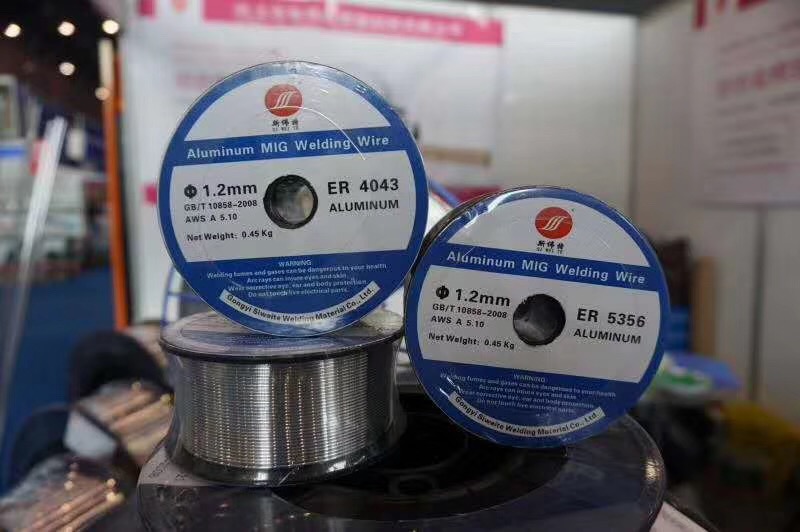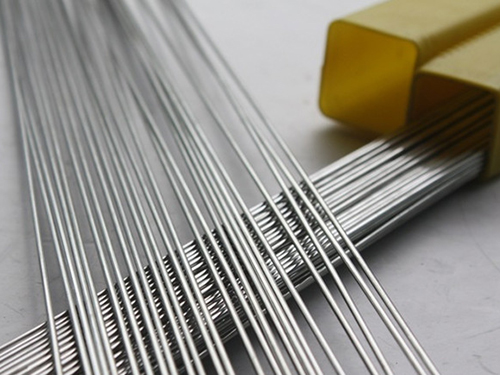

Aluminum alloy products have light weight, good tensile properties. It realize the large and wide shape of its profile. So it has become a hot research topic in various countries. Due to the large thermal expansion coefficient and small elastic modulus of aluminum alloy. The welding deformation problem is particularly serious. Which greatly affects the manufacturing accuracy and service performance of the structure.The aluminum alloy sheet use for structure has small self-restraint degree. The expansion coefficient of aluminum alloy become large. Therefore, the study of aluminum alloy sheet welding technology is very important.
Aluminum alloy sheet welding structure light weight. Corrosion resistance, excellent processing performance, easy to connect. In the case, car body has widely use. In some aviation equipment and high-speed train. Aluminum alloy sheet mainly use in the skin, floor, end wall and other parts. The main aluminum alloy use :5754 and 5083 two kinds of non-heat treatment strengthened aluminum alloy. The main methods of welding aluminum alloy sheet are as follows:
Argon tungsten arc welding method (TIG)
Argon tungsten arc welding (gtaw). Which is a mature welding method. It is widely use in aluminum alloy welding. Compared with manual TIG, automatic TIG and pulse TIG automatic welding. The long seam of aluminum alloy sheet adopts pulse TIG automatic welding and welding is more ideal. After welding, the street performance of welding seam is good. And the production efficiency is more than three times higher than manual TIG.
In order to remove the oxide film on the aluminum alloy surface and reduce the burning loss of tungsten electrode. It is better to adopt the method of ac TIG welding. The amplitude of the pulse current and the time of ER half wave determine the ability of the cathode to clean the oxide film.
Argon arc welding method (MIG)
Because the use of TIG welding to weld aluminum alloy sheet is easy to produce welding defects. It can not meet the requirements of high efficiency and quality. In mass production, TIG welding is difficult to meet the needs of a wide range of use. At present, domestic aluminum alloy sheet welding a large number of use melting pole argon arc welding. The problems of porosity and poor forming in the welding process of 1 ~ 3mm aluminum alloy sheet have solve successfully. By optimizing the welding process parameters, the productivity of 2mm aluminum alloy sheet by MIG welding more than twice that of TIG. And the quality can also reach the international standard.
When double-pulse MIG welding use for 2.5mm 1060 aluminum alloy sheet. The modified arc length of low-energy pulse stage should be higher than that of high-energy pulse stage to obtain a good weld. However, using pulse MIG welding to weld aluminum alloy sheet. Welding parts are easy to be burnt through. And the welding process is difficult to control. Therefore, the operator needs to master the operation skills. Otherwise, the stability of welding product quality will difficult to ensure. For this reason, modern welders adopt built-in expert system to ensure the optimization of welding process parameters. Which leads to the emergence of fool welders. Which can appropriately reduce the skill level of operators.
Laser welding method (LBW)
Laser welding is a superior welding method. Which has the advantages of advanced nature. energy concentration; small welding deformation; good welding quality and high production efficiency.For laser wire filling welding, wire feeding mode. Light wire spacing and welding heat input are the main factors that affect weld formation. Compared with laser single spot welding, Laser double spot welding aluminum alloy can obviously improve the weld quality. Adding welding wire can improve the surface quality of the welding seam of aluminum alloy by laser single spot welding. But it will increase the welding seam to produce large porosity.
In the laser welding, the multi-light path system can use to weld aluminum alloy sheet. Which can improve the quality of laser welding and obtain high-quality welding seam. However, generally speaking, the mechanical properties of the joints of aluminum alloy sheet welde in laser are not ideal. And the mechanical properties of the weld seam usually only reach about 60% of that of the base material. Moreover, the gap between joints is strictly require by laser welding, and the welding process is not very stable. Which is easy to cause welding defects. Therefore, laser welding aluminum alloy sheet can only use in the not very important occasions.
Friction stir welding method (FSW)
The British invented friction stir welding in 1991, and it was soon used with Boeing for welding aircraft and rockets. Which is enough to illustrate the advantages of this welding method. The main features of this welding method are short duration of welding process. Higher reliability of welding joint and lower requirements of operation skills. Friction stir welding (FSW) is a new solid phase welding technology.
It can avoid the common defects in fusion welding. Such as porosity and solidification crack. And has small welding deformation high joint strength. Friction stir welding is carried out on LF2 aluminum alloy sheet with thickness of 1.4mm. The joint strength reaches 80 ~ 85% of the base material. Friction stir welding is adopted for 6061-t6 aluminum alloy with thickness of 1mm. After optimization of welding parameters. The tensile strength of the joint reaches 105% of that of the parent material. Friction stir welding is better than other traditional welding methods in aluminum alloy sheet welding.

